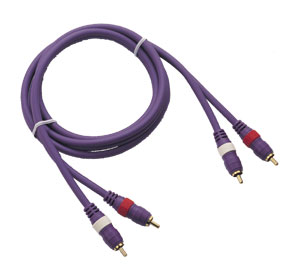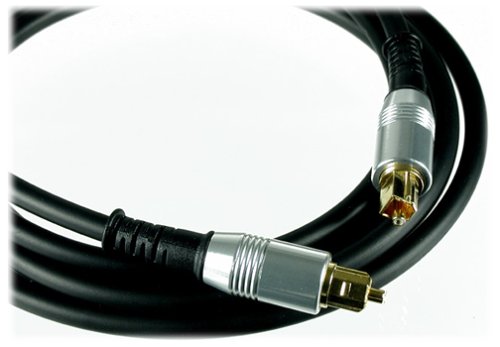How to Choose Audio Cables
The performance of your home theater's audio components is directly proportional to the quality of the audio cables used to connect those components. There is no substitute for quality cables in home theater. You have no doubt heard the phrase, "garbage in = garbage out". This is exactly why you bought the excellent components that you did. However, if that great signal that your brand new DVD player just generated is sent through cheap audio cables, it will come out "dirty" on the other side regardless of how good your receiver is. This guide will help you choose the audio cables that will give you the performance you deserve.

Thicker Cable = Better Signal
That pretty much sums it up. Thicker gauge audio cables allow for better signal transmission between home theater components. Go for copper cables that are 99% oxygen-free. When choosing which audio cables to purchase, you must first know what components you are connecting. The articles on connections will help you find out which ones are compatible with your equipment and the benefits of each. Using a string, you can measure the distance between your components so that you know the minimum cable length that is needed.Shielding
Some audio cables are "shielded" from electromagnetic (EM) and radio frequency (RF) interference. Whenever electrical current travels through a wire, it creates an electromagnetic field. This means that each component of your home theater system, all of the electrical wiring in your walls, every device that uses electricity creates an EM field. When those EM fields disrupt a signal, it is considered electromagnetic interference (EMI). This is why it is important for components that will be next to your television, such as your center channel, to have shielding. Otherwise it will create visual artifacts on your screen. It is also important for your audio cables; EMI will create hissing and other audio artifacts if they are too susceptible to the fields.Two Flavors of Digital Audio Cables
 Digital audio cables come in two
different types, digital optical and digital coaxial. Digital
optical audio cable or
Toslink uses light to transmit the information between
components. Since the digital optical cable employs light, it
is not noticeably effected by electromagnetic and radio frequency
interference.
Digital audio cables come in two
different types, digital optical and digital coaxial. Digital
optical audio cable or
Toslink uses light to transmit the information between
components. Since the digital optical cable employs light, it
is not noticeably effected by electromagnetic and radio frequency
interference. Digital coaxial should not be confused with the RF coaxial used for cable television. This type of coaxial cable is designed specifically for sending digital audio signals. Digital coaxial cables transmit the digital audio signal without the need to make conversions. This simplification of the transmission process will eliminate audio artifacts that may result from the conversions necessary for other types of cable.
Again, there is no substitute for quality. One way or another, you will get what you pay for. Whether you are rewarded with excellent sound quality for using great audio cables or your home theater system never reaches its full potential because you purchased cheap cables, it is all in your hands.